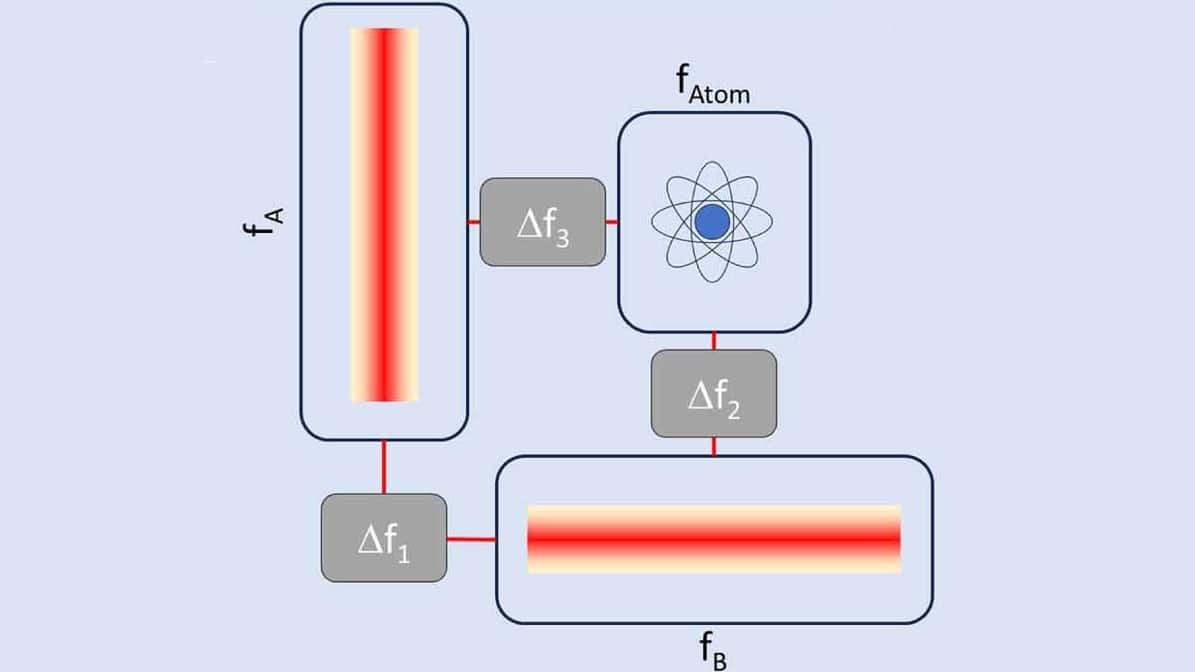Science
Researchers Unveil Method to Detect Gravitational Waves in New Frequency Range

A team of researchers in the United Kingdom has proposed a novel method using a network of optical cavities to detect gravitational waves (GWs) at previously unexplored frequencies. This approach could enable astronomers to search for GWs in the milli-Hz frequency band, specifically within the range of 10−5 Hz–1 Hz. The advancement holds promise for uncovering signals from binary systems of white dwarfs, neutron stars, and stellar-mass black holes, many of which are expected to originate from within the Milky Way.
Gravitational waves were first detected a decade ago, and since then, the LIGO-Virgo-KAGRA detection network has identified waves from numerous black hole and neutron star mergers, primarily operating in the 10 Hz–30 kHz frequency range. Researchers have also recorded gravitational wave backgrounds at nanohertz frequencies through pulsar timing arrays. Nevertheless, the milli-Hz band has remained largely uncharted.
The new initiative, known as QSNET, was part of the UK’s Quantum Technology for Fundamental Physics (QTFP) programme. Giovanni Barontini, a researcher at the University of Birmingham, explained that QSNET aimed to develop a network of clocks for measuring the stability of fundamental constants. He noted, “This programme brought together physics communities that normally don’t interact, such as quantum physicists, technologists, high energy physicists, and astrophysicists.” Although the QTFP programme concluded in 2023, Barontini and his colleagues made significant progress in demonstrating how milli-Hz gravitational waves could be detected using optical cavities.
Inside an ultrastable optical cavity, light at specific resonant frequencies bounces continuously between a pair of mirrors. When this light is generated by a specific atomic transition, it can act as a highly accurate clock. Barontini stated, “Ultrastable cavities are a main component of modern optical atomic clocks. We demonstrated that they have reached sufficient sensitivities to be used as ‘mini-LIGOs’ and detect gravitational waves.”
The QSNET findings suggest that while the spacing between mirrors in an optical cavity does not change in response to passing gravitational waves, the phase of the light within the cavity is altered. Team member Vera Guarrera emphasized that “methods from precision measurement with cold atoms can be transferred to gravitational-wave detection.” By merging these techniques, the researchers envision compact optical resonators as credible probes for the milli-Hz range, complementing existing detection methods.
The proposed detector would consist of two optical cavities positioned at 90 degrees to each other, each operating at different frequencies, along with an atomic reference at a third frequency. The phase shift caused by a passing gravitational wave would manifest as a change in the interference patterns among the three frequencies.
The team advocates for the establishment of a global ground-based network of these detectors. According to Xavier Calmet from the University of Sussex, this network could not only detect gravitational waves but also pinpoint their sources in the sky. He stated, “This detector will allow us to test astrophysical models of binary systems in our galaxy, explore the mergers of massive black holes, and even search for stochastic backgrounds from the early universe.”
Barontini expressed hope that this work would inspire the creation of a global sensor network capable of scanning a new frequency window rich with sources, including many from our own galaxy. “By harnessing this existing technology,” he added, “we can open up a new era of discovery regarding gravitational waves in the milli-Hz range, possibly much sooner than many current projects.”
The research detailing these findings has been published in Classical and Quantum Gravity, marking a significant step forward in gravitational wave detection technology.
-

 Health3 months ago
Health3 months agoNeurologist Warns Excessive Use of Supplements Can Harm Brain
-

 Health3 months ago
Health3 months agoFiona Phillips’ Husband Shares Heartfelt Update on Her Alzheimer’s Journey
-

 Science2 months ago
Science2 months agoBrian Cox Addresses Claims of Alien Probe in 3I/ATLAS Discovery
-

 Science2 months ago
Science2 months agoNASA Investigates Unusual Comet 3I/ATLAS; New Findings Emerge
-

 Science1 month ago
Science1 month agoScientists Examine 3I/ATLAS: Alien Artifact or Cosmic Oddity?
-

 Entertainment5 months ago
Entertainment5 months agoKerry Katona Discusses Future Baby Plans and Brian McFadden’s Wedding
-

 Science1 month ago
Science1 month agoNASA Investigates Speedy Object 3I/ATLAS, Sparking Speculation
-

 Entertainment4 months ago
Entertainment4 months agoEmmerdale Faces Tension as Dylan and April’s Lives Hang in the Balance
-

 World3 months ago
World3 months agoCole Palmer’s Cryptic Message to Kobbie Mainoo Following Loan Talks
-

 Science1 month ago
Science1 month agoNASA Scientists Explore Origins of 3I/ATLAS, a Fast-Moving Visitor
-

 Entertainment2 months ago
Entertainment2 months agoLewis Cope Addresses Accusations of Dance Training Advantage
-

 Entertainment3 months ago
Entertainment3 months agoMajor Cast Changes at Coronation Street: Exits and Returns in 2025









